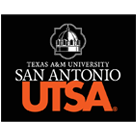Document Types
Individual Presentation
Start Date
2-24-2024 2:00 PM
End Date
2-24-2024 2:20 PM
Track
Language Attitudes/Ideologies
Abstract
Unveiling Authenticity: Narrowing Linguistic Patterns among Spanish Heritage Speakers in the USA
This abstract discusses the importance of identifying and narrowing common linguistic patterns among Spanish heritage speakers to assess the authenticity of their written assignments in educational settings. Spanish heritage speakers, who possess varying levels of proficiency in both English and Spanish, face unique challenges when expressing their authentic voice and cultural background in their essays. By employing linguistic analysis, it becomes feasible to evaluate the authenticity of their written work, promoting linguistic and cultural integrity.
Understanding and distinguishing linguistic patterns commonly found among US Spanish heritage speakers (Escobar and Potowsky 2015, Klee and Lynch 2009, Sánchez Abchi y De Mier 2017) is crucial in accurately assessing the authenticity of their essays. By narrowing down these patterns, a benchmark can be established for differentiating authentic content from non-native or machine-generated content.
The importance of identifying these patterns lies in promoting cultural preservation, individual expression, and academic integrity. By recognizing and valuing unique linguistic features, educational institutions, teachers, and evaluators can create an inclusive environment that fosters linguistic diversity and respects the rich cultural heritage of Spanish-speaking communities. This presentation aims to narrow some of these linguistic patterns using authentic writing assignments from students, ultimately supporting Spanish heritage speakers in refining their writing skills and expressing their ideas authentically.
Collaboration among linguists, educators, and AI experts is vital to ensure the development of robust and fair assessment frameworks that capture the authenticity and individuality of Spanish heritage speakers' essays.
Keywords: linguistic patterns, heritage, Spanish, writing assignments
References
Elola, Idoia and Ariana Mikulski. 2013. Revisions in Real Time: Spanish Heritage Language Learner’s Writing Processes in En glish and Spanish. Foreign Language Annals. 46.4: 646-660.
Escobar, Ana Maria and Kim Potowski. 2015. El español de los Estados Unidos. Cambridge: Cambridge University Press.
Klee, Carol A. and Andrew Lynch. 2009. El español en contacto con otras lenguas. Georgetown University Press.
Moreno-Fernández, Francisco. 2017. Español estadounidense: perfiles lingüísticos y sociales. Revista Glosas. 9, 2: 10-23.
Sánchez Abchi, Verónica y Vanessa De Mier. 2017. Syntactic complexity in narratives written by Spanish Heritage Speakers. Vigo International Journal of Applied Linguistics, 14: 125-147.
Recommended Citation
Vargas, Edgar and Balasch, Sonia, "Unveiling Authenticity: Narrowing Linguistic Patterns among Spanish Heritage Speakers in the USA" (2024). 11th National Symposium on Spanish as a Heritage Language. 18.
https://digitalcommons.tamusa.edu/heritage_spanish/SCHEDULE/Saturday/18
Included in
Digital Humanities Commons, Feminist, Gender, and Sexuality Studies Commons, Language Interpretation and Translation Commons, Latin American Languages and Societies Commons, Spanish and Portuguese Language and Literature Commons
Unveiling Authenticity: Narrowing Linguistic Patterns among Spanish Heritage Speakers in the USA
Unveiling Authenticity: Narrowing Linguistic Patterns among Spanish Heritage Speakers in the USA
This abstract discusses the importance of identifying and narrowing common linguistic patterns among Spanish heritage speakers to assess the authenticity of their written assignments in educational settings. Spanish heritage speakers, who possess varying levels of proficiency in both English and Spanish, face unique challenges when expressing their authentic voice and cultural background in their essays. By employing linguistic analysis, it becomes feasible to evaluate the authenticity of their written work, promoting linguistic and cultural integrity.
Understanding and distinguishing linguistic patterns commonly found among US Spanish heritage speakers (Escobar and Potowsky 2015, Klee and Lynch 2009, Sánchez Abchi y De Mier 2017) is crucial in accurately assessing the authenticity of their essays. By narrowing down these patterns, a benchmark can be established for differentiating authentic content from non-native or machine-generated content.
The importance of identifying these patterns lies in promoting cultural preservation, individual expression, and academic integrity. By recognizing and valuing unique linguistic features, educational institutions, teachers, and evaluators can create an inclusive environment that fosters linguistic diversity and respects the rich cultural heritage of Spanish-speaking communities. This presentation aims to narrow some of these linguistic patterns using authentic writing assignments from students, ultimately supporting Spanish heritage speakers in refining their writing skills and expressing their ideas authentically.
Collaboration among linguists, educators, and AI experts is vital to ensure the development of robust and fair assessment frameworks that capture the authenticity and individuality of Spanish heritage speakers' essays.
Keywords: linguistic patterns, heritage, Spanish, writing assignments
References
Elola, Idoia and Ariana Mikulski. 2013. Revisions in Real Time: Spanish Heritage Language Learner’s Writing Processes in En glish and Spanish. Foreign Language Annals. 46.4: 646-660.
Escobar, Ana Maria and Kim Potowski. 2015. El español de los Estados Unidos. Cambridge: Cambridge University Press.
Klee, Carol A. and Andrew Lynch. 2009. El español en contacto con otras lenguas. Georgetown University Press.
Moreno-Fernández, Francisco. 2017. Español estadounidense: perfiles lingüísticos y sociales. Revista Glosas. 9, 2: 10-23.
Sánchez Abchi, Verónica y Vanessa De Mier. 2017. Syntactic complexity in narratives written by Spanish Heritage Speakers. Vigo International Journal of Applied Linguistics, 14: 125-147.

